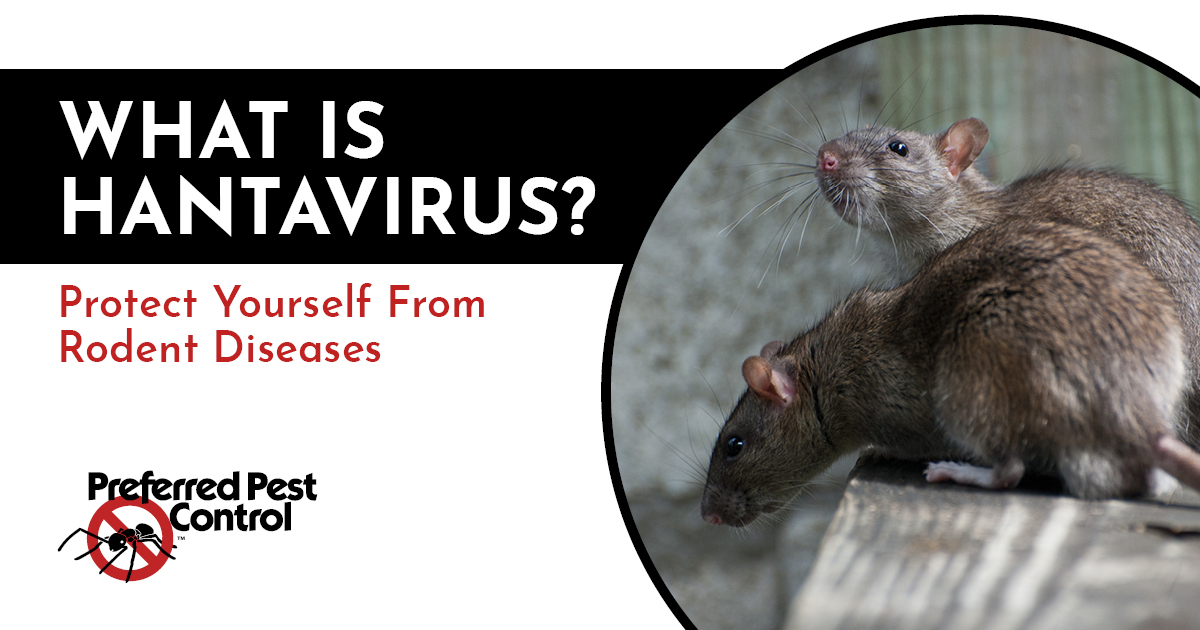
What You Need to Know About Hantavirus & Other Diseases From Mice
September 24, 2021
If you see a tiny rodent or two scurry across the floor, your first thought might be to go after it and dispose of it immediately. Our pest professionals want to caution homeowners choosing to perform at-home pest control tactics when it comes to rodents because people can acquire many types of diseases from mice and rats. Our goal is to inform homeowners of the dangers a rat or mice problem can have on the people living in an infested home and help those wondering what hantavirus is learn the symptoms and common signs so they can avoid getting sick.
Can You Get Sick From Mice?
Rodents can absolutely get homeowners sick. The most common ways you can get sick from mice are through contamination of food, contact with their feces or a bite. Mice try to build their habitats close to a food source, which if why oftentimes they’re found near the kitchen when inside a home. They can spoil food by using their strong teeth to gnaw through a box or by climbing around the cupboards and leaving their feces behind. To avoid getting sick from mice contaminating your food, we recommend keeping food items in tightly sealed containers and regularly cleaning up crumbs and other food left on the counter.
If homeowners don’t know they are sharing their house with a mouse, it is possible the homeowner can get sick from mice poop or urine. Their feces can release a dangerous bacteria into the air that can cause serious problems if it gets into the human body. Stay away from mouse droppings to avoid diseases from mice.
Top 5 Diseases From Mice
- Hantavirus
- Lymphocytic Choriomeningitis (LCM)
- Plagues (bubonic, septicemic, pneumonic)
- Tularemia
- Salmonella
What is Hantavirus?
Hantaviruses are a variety of viruses spread by rodents. This disease can be transferred from their saliva in the case of a bite, or through the air from their urine and feces, which is why Hantavirus is sometimes known as the mouse droppings disease. It can cause serious health problems and in some cases can even lead to death which is why we want to help homeowners understand what hantavirus is and avoid it.
Mouse Droppings Disease Symptoms
Early signs of mouse droppings disease mimic flu-like symptoms. Infected persons could experience fatigue, fever, muscle aches, headaches, dizziness, chills, nausea, vomiting or diarrhea. Mouse droppings disease symptoms may develop anytime within 1-8 weeks after exposure to feces. If untreated, mouse droppings disease can cause coughing and shortness of breath after only one week as your lungs will start to fill with fluid. According to the Centers for Disease Control and Prevention (CDC), Hantavirus Pulmonary Syndrome (HPS) has a 38% fatality rate, so if you notice any of the mouse droppings disease symptoms above, visit a physician right away.
How to Avoid Mouse Droppings Disease
Each type of hantavirus subtype comes from a specific rodent species, and this disease from mice and rats typically stems from 4 rodent species:
- Deer Mouse
- Cotton Rat
- Rice Rat
- White-Footed Mouse
Deer mice are a very common rodent species found in Iowa, so our exterminators tell homeowners to be cautious if they believe they have a mice infestation. Spotting mice feces is one of the first signs you might notice before realizing you have a mice infestation. When you identify the mouse droppings, your first instinct might be to sweep them up and dispose of them, but this can be very dangerous to your health! Hantavirus and other diseases from mice are contracted by humans through airborne bacteria that comes from mice feces. If you’re not sure what mouse droppings look like or you don’t know the proper way to dispose of them, it’s best to avoid them until a professional can come to your home. Mice removal experts can safely discard the feces and determine the best rodent control tactics that will lead to long-term protection without putting themselves or the homeowner at risk of mouse droppings disease.
What Do Mouse Droppings Look Like?
Mouse feces are very small and shaped like grains of rice. When mice leave fresh droppings behind, they’ll be dark brown in color with a shiny look to them. Older droppings will be light in color and look chalky and dried out.
What’s The Difference Between Mouse and Rat Poop?
Mouse and rat feces look similar in appearance, both are dark and pellet-shaped. The difference between mouse and rat droppings is that rat feces are larger and typically range between ½ - ¾-inch in length. Mouse poop is smaller, about ¼-inch long on average. If you spot rodent droppings in your home, try not to touch them or move them around. Homeowners can try to ventilate the area the feces are in and call a professional to dispose of them.

Let The Professionals Take Care of Mice Removal - Contact Preferred Pest Control
We want to help Iowans stay safe and avoid getting sick from mice while getting rid of them and other unwanted visitors in the home. If you’ve spotted rat or mouse droppings, you suspect an infestation on your hands or you want to learn more about what hantavirus is, call the professionals at Preferred Pest Control to take care of the problem. You can schedule an appointment online or call our office at (515) 415-5550.
Check out these similar blogs: